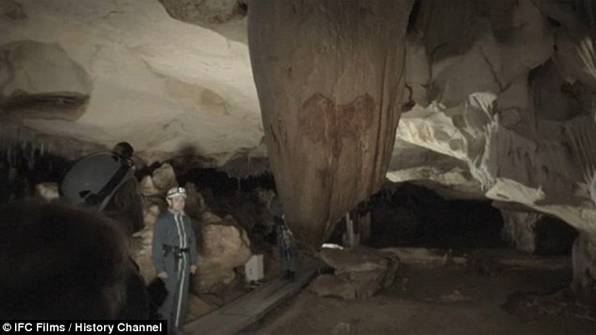Cave of Forgotten Dreams - 30,000 Year Old Paleolithic Art in 3D
Source: buzz.yahoo.com
Filmmaker Werner Herzog is well known for his ambitious movies. His latest project, "Cave of Forgotten Dreams," may be his wildest film yet.
The documentary, which hits theaters this spring, focuses on the Chauvet-Pont-d'Arc Cave in France. The cave is tens of thousands of years old, and for many thousands of those years no human being knew about it. Three French explorers discovered the cave in 1994.
So, what makes this cave worthy of a 3D documentary from one of the world's great filmmakers? For one, the cave contains amazing detailed drawings that defy explanation.
Gizmodo explains: "The walls contain hundreds of animals—like the typical Paleolithic horses and bisons—but some of them are not supposed to be there, like lions, panthers, rhinos, and hyenas."
Apparently, some of the paintings are of creatures that don't exist. For example, an animal that looks like a half-woman, half-bison. Gizmodo speculates that these artistic liberties may have something to do with the copious amounts of carbon dioxide and other gases in the cave. The theory is that hallucinations in the cave were common.
To secure permission to film in what is inarguably a French national treasure, Herzog had to agree to bring just a few crew members with him and make sure everyone wore special suits and shoes the entire time so as not to disturb the find. Also, due to the high levels of carbon dioxide, Herzog and company could stay in the cave for only a few hours at a time. Safety first.
The film was inspired by a 2008 New Yorker article by Judith Thurman. Even though it's a documentary about a cave few people could pronounce let alone find on a map, the Web searches are soaring. Online lookups for the movie have spiked over 400% during the past week. Clearly, moviegoers are excited to join Herzog on his latest adventure. No special suit or shoes required.
Source: buzz.yahoo.com
Legendary filmmaker Werner Herzog brings paleolithic cave to life
From: dailymail.co.uk
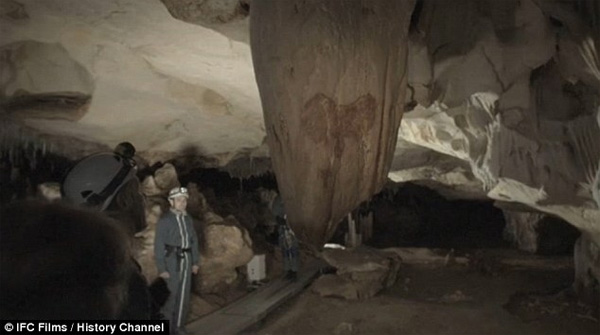
Brought to life: The Chauvet-Pont-d'Arc cave in southern France is now the subject of a 3D documentary by filmmaker Werner Herzog called Cave Of Forgotten Dreams
Covered in ancient dots and lines, it's thought to be where man made his first attempts to write.
Since its (re)discovery in 1994, the Chauvet-Pont-d’Arc Cave in southern France has offered scientists a veritable treasure trove of perfectly preserved paintings.
Alongside these are and evidence of attempts at communication 30,000 to 40,000 years ago.
Now the long-abandoned underground enclosure is the subject of a 3D documentary by German filmmaker Werner Herzog, called Cave Of Forgotten Dreams.
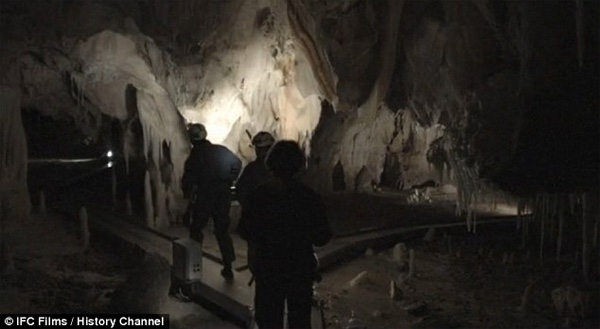
Discovered in 1994, the cave has offered scientists a veritable treasure trove of perfectly preserved paintings
Among the riches on offer is a chamber full of painted monsters 400metres below the surface, where a mixture of carbon dioxide and radon gas leads to hallucinations. (Yeah, that makes a lot of sense ;-))
It is here that the paintings start to become a strange, so strange in fact that scientists think heading down to the chamber may have formed part of a ritual for prehistoric man.
Alongside the paintings lie drawings of dots and lines that had previously been dismissed as little more than doodles.
But a new analysis of the markings, published last year, found in caves in France has challenged previous historical theories about the cultural development of our ancestors.
The lines, dots, zig-zags and semi-circles appear to indicate prehistoric man, as long ago as 30,000 to 40,000 years ago, may have been trying to communicate through symbols rather than pictures.
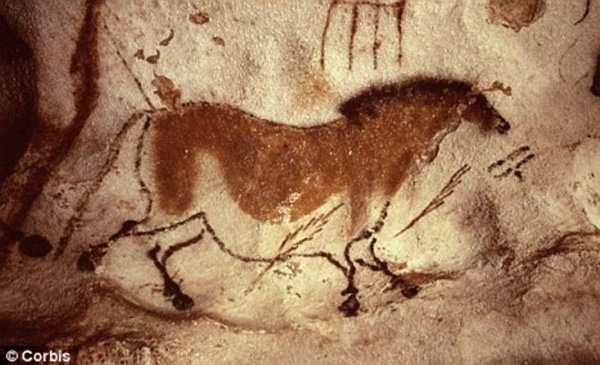
Early art: The cave is full of perfectly preserved paintings made by prehistoric man
They suggest tribes who came to Europe from Africa could have brought the 'language' with them, placing its origin even further back in the timeline of evolution.
It had previously been thought that a 'creative explosion' occurred nearly 40,000 years ago when our ancestors started to think abstractly and create rock art.
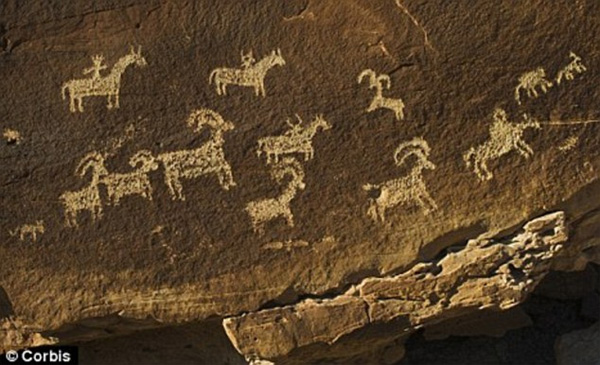
Messages from another world: The cave signs and paintings cover 25,000 years of prehistory from 35,000 to 10,000 years ago
Writing, it was believed, came much later with the earliest records of a pictographic writing system just 5,000 years ago.
But last year's findings hint that a written code may have been used by tribesmen in France thousands of years earlier.
The cave signs cover 25,000 years of prehistory from 35,000 to 10,000 years ago.

Underground: Filmmaker Werner Herzog
Twenty-six signs, drawn in the same style, appeared again and again at different sites. Some, such as straight lines, circles and triangles, were fairly basic but there were other, more complex symbols repeated as well.
This led the researchers to consider whether they had discovered the very start of attempts to communicate through writing.
They re-examined the drawings and found that less abstract symbols were being used to indicate a larger figure.
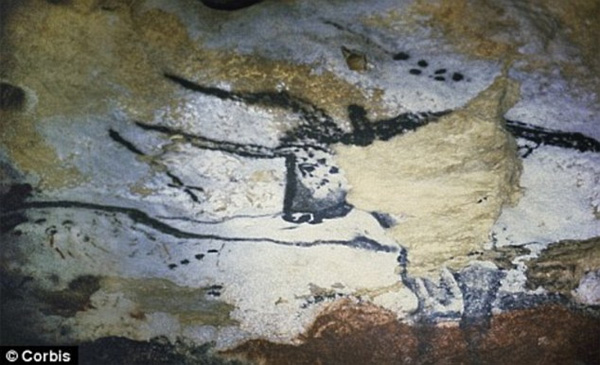
Among the other riches on offer is a chamber full of painted monsters 400metres below the surface, where a mixture of carbon dioxide and radon gas leads to hallucinations
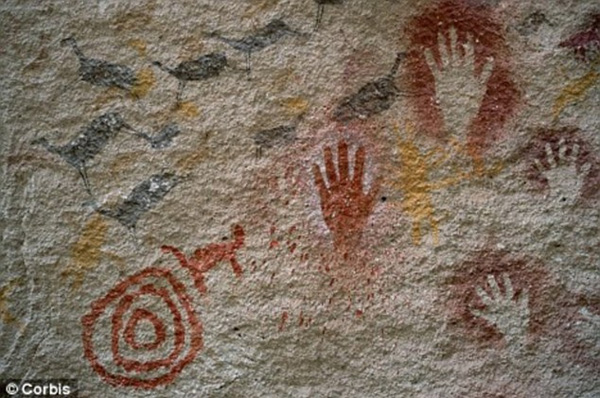
Sign language: Cave Of Forgotten Dreams is due for release later this year
For example, a tusk was used to indicate a mammoth. This, known as a synecdoche, is common to pictographic languages.
This appeared to prove that our ancestors, even at this early date, were considering how to use abstract symbols rather than realistic pictures.
Cave Of Forgotten Dreams is due for release later this year.
Source: dailymail.co.uk
Red Ice Radio
William Glyn-Jones - Constellation Art, Star-Maps & Arcadian Dreamtime
Andrew Collins - Beneath The Pyramids, Giza Cave System Rediscovered
Andrew Collins - Giza's Cave Underworld Update
Klaus Dona - Unsolved Mysteries, Giants & Out of Place Artifacts
Michael Tellinger - Adam's Calendar & Slave Species of God
Lascaux Cave Art - 16,000 years old

Lascaux is the setting of a complex of caves in southwestern France famous for its Paleolithic cave paintings. The original caves are located near the village of Montignac, in the Dordogne département. They contain some of the most well-known Upper Paleolithic art. These paintings are estimated to be 16,000 years old.
Related: Egypt's Oldest Known Art Identified, Is 15,000 Years Old
Aratta Civilisation of Ukraine Dating to 22000 BCE - Presentation by Dr. Tim & Heatherlee Hooker (Video)
Göbekli Tepe in Turkey: A 12,000-year-old Temple Complex
Neurology and the Passion for Art (Video)
35,000-year-old ivory carving found: Busty sculpture could be world's oldest
World’s oldest ritual discovered. Worshipped the python 70,000 years ago
The Mysterious Origins of Man (Video) & Humans Walked On Modern Feet 1.5 Million Years Ago, Fossil Footprints Show
Million-year-old human tooth found in Spain
The cave was discovered on 12 September 1940 by four teenagers, Marcel Ravidat, Jacques Marsal, Georges Agnel, and Simon Coencas, as well as Ravidat's dog, Robot.

The cave was closed to the public in 1963 in order to preserve the art. After the cave was closed, the paintings were restored to their original state, and are now monitored on a daily basis. Rooms in the cave include The Great Hall of the Bulls, the Lateral Passage, the Shaft of the Dead Man, the Chamber of Engravings, the Painted Gallery, and the Chamber of Felines.

The cave contains nearly 2,000 figures, which can be grouped into three main categories -- animals, human figures and abstract signs. Notably, the paintings contain no images of the surrounding landscape or the vegetation of the time. Most of the major images have been painted onto the walls using mineral pigments although some designs have also been incised into the stone. Many images are too faint to discern, while others have deteriorated.

Over 900 can be identified as animals, and 605 of these have been precisely identified. There are also many geometric figures. Of the animals, equines predominate, with 364 images. There are 90 paintings of stags. Also represented are cattle and bison, each representing 4-5% of the images. A smattering of other images include seven felines, a bird, a bear, a rhinoceros, and a human. Among the most famous images are four huge, black bulls or aurochs in the Hall of the Bulls. There are no images of reindeer, even though that was the principal source of food for the artists.

The most famous section of the cave is The Great Hall of the Bulls where bulls, equines and stags are depicted. But it is the four black bulls that are the dominant figures among the 36 animals represented here. One of the bulls is 17 feet (5.2 m) long -- the largest animal discovered so far in cave art. Additionally, the bulls appear to be in motion.

A painting referred to as "The Crossed Bison" and found in the chamber called the Nave is often held as an example of the skill of the Paleolithic cave painters. The crossed hind legs show the ability to use perspective in a manner that wasn't seen again until the 15th century.

In recent years new reseach has suggested that the Lascaux paintings may incorporate prehistoric star charts. Dr Michael Rappenglueck of the University of Munich argues that some of the non-figurative dot clusters and dots within some of the figurative images correlate with the constellations of Taurus, The Pleiades and the grouping known as the "Summer Triangle". Based on her own study of the astronomical significance of Bronze Age petroglyphs in the Vallée des Merveilles and her extensive survey of other prehistoric cave painting sites in the region -- most of which appear to have been specifically selected because the interiors are illuminated by the setting sun on the day of the winter solstice -- French researcher Chantal Jègues-Wolkiewiez has further proposed that the gallery of figurative images in the Great Hall represents an extensive star map and that key points on major figures in the group correspond to stars in the main constellations as they appeared in the Paleolithic.

Source: wikipedia.org/wiki/Lascaux
More Images: Lascaux Google Image Search
